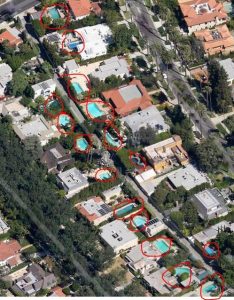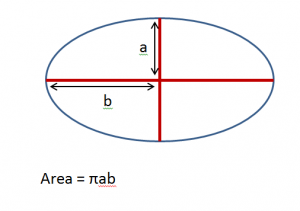By Peter Gleick, President

Water policy and water problems always seem to be someone else’s responsibility. Those farmers who use all the water; the guy down the street who lets his sprinklers run all over the sidewalk; the Central Valley cities that don’t even have water meters; the environmentalists who are demanding water for some inconsequential fish we can’t even eat; those swimming pool owners in hot Los Angeles.
The reality, of course, is that water problems belong to all of us. We all contribute in various ways through our choices of appliances, or diets, or Congressional representatives, or gardens. And every little thing adds up to stress our limited freshwater, or contributes just a bit more to water pollution that has to be treated or ends up contaminating a local waterway.
Just recently, however, an interesting piece of information became available that let me actually calculate something I’ve always wondered. How much water do those Los Angeles pools actually contain, and how much is lost every year to evaporation? Could we solve California’s water problems if we just addressed the “swimming pool” problem?
Here are the pieces of the puzzle:
How many pools are there? A new “Big Atlas of L.A. Pools” has just been released. It is a digital analysis of every swimming pool in the Los Angeles basin between San Pedro and the Hollywood Hills, and from Santa Monica to Alhambra. This analysis, by Joseph Lee and his research partner Benedikt Gross, identified 43,123 swimming pools.
How big are these pools? The Lee and Gross analysis also provided an estimate of the average size of the pools in LA. According to them, the typical swimming pool in Los Angeles is oval-shaped and measures 16 feet, 4 inches (width) by 33 feet, 6 inches (length). Other research suggests that the average depth of a pool is 5 and a half feet. Using these data, the average surface area of a pool is around 430 square feet (the area of an oval is π*a*b, where “a” and “b” are the semi-major axis (half of the length and width)) and the average volume is 2,400 cubic feet, or around 18,000 gallons.
This suggests that the total amount of water stored in Los Angeles swimming pools at any one time is around 760 million gallons, or 2,300 acre-feet of water.
How much water is lost every year to evaporation? The Los Angeles Airport experiences an estimated 65.5 inches per year of “pan” evaporation – the amount of water that evaporates from a standard measuring device used by hydrologists – a four-foot diameter Class A evaporation pan. This rate of water loss is approximately (perhaps 25% higher than) what would occur off of the surface of a pool. Assuming there are no pool covers, this means that the surface area of all Los Angeles swimming pools would lose around 2,000 acre-feet of water per year to evaporation. [It is a coincidence that the total amount of water stored in LA pools is around the same amount as lost to evaporation annually. That is due to the fact that the annual evaporation losses are about equal to the average depth of a pool.] Swimming pool covers can save an estimated 30 to 50 percent of this water, so actual losses are likely to be somewhat less (depending on how many pool covers there are and how they are used).
To put this in perspective, total water use in the LA Basin is around 600,000 acre-feet per year.
The bottom line: water use and losses from swimming pools in LA are relatively low compared to total water use. Certainly, pool covers should be used everywhere, and leaky pools should be repaired. And pool owners should certainly be paying the full cost of providing, treating, and using this water. But taking away those amenities is not the solution to the state’s water challenges.
Lawns, on the other hand….
(Stay tuned.)
Pacific Institute Insights is the staff blog of the Pacific Institute, one of the world’s leading nonprofit research groups on sustainable and equitable management of natural resources. For more about what we do, click here. The views and opinions expressed in these blogs are those of the authors and do not necessarily reflect an official policy or position of the Pacific Institute.



